U.S. spe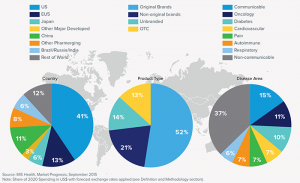 nding on medicines will approach $590 billion in 2020, increasing 34% over 2015, IMS Institute for Healthcare Informatics projects in its forecast, Global Medicines Use in 2020. Growth in spending will be attributable to innovation (new products), price increases and some patent losses of exclusivity (e.g., branded drugs going generic).
nding on medicines will approach $590 billion in 2020, increasing 34% over 2015, IMS Institute for Healthcare Informatics projects in its forecast, Global Medicines Use in 2020. Growth in spending will be attributable to innovation (new products), price increases and some patent losses of exclusivity (e.g., branded drugs going generic).
The U.S. will cover the bulk of drugs spending in 2020 at 41% of the world medicines market, shown in the first pie in the first chart. U.S. medicines spending dwarfs any other country or region in the world, including China which is expected to account for 11% of the global drugs market (the green “slice”).
Of the $24 billion in new Rx brand spending in 2014, 50% was for Hepatitis C treatments: 140,000 more new patients were treated for Hep C that year, with higher treatment costs per patient related especially to the specialty drugs Sovaldi and Harvoni.
In addition, the Affordable Care Act will drive increased drugs spending in the U.S. with the addition of new covered patients; more medicines will be covered by Medicare, Medicaid and other government funded programs. These programs will shift payment toward outcomes- and value-based paradigms which will constrain drug pricing in the U.S. On the other hand, the impact on the commercial side of more patients in high-deductible health plans could hit adherence (lowering demand due to out-of-pocket, first-dollar costs borne by patients).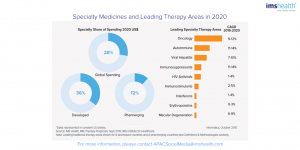
Innovation is the big story for 2020, the IMS Institute report expects. Cancer therapies will be the largest specialty drug category of the 225 new medicines expected to be launched by 2020, followed by medicines for autoimmune disease, viral hepatitis, and immunosppressants, shown in the second chart. Specialty drug share of spending is expected to reach 28% of global drug spending in 2020.
We can expect digitally-enhanced therapeutics to be part of the 2020 medicines scene in 2020, with technology enabling treatment protocols, supporting patient engagement, and underpinning shared decision making and care between doctors and patients, the report expects.
Health Populi’s Hot Points: For patients in developed countries, the IMS Institute’s 2020 forecast finds people more actively engaged in self-healthcare enabled through technology, with greater access to healthcare and medicines especially for cancer and rare diseases. These patients will also bear more medicine costs as both public and private healthcare plans work to manage/lower their share of healthcare costs.
The greater risk-shift to U.S. patients has been seen in the rise of high-deductible health plans, which has made the patient the ultimate payor. Developers and marketers of new-new medical therapies must plan for this payor, considering patients’ perspectives early in the drug development process well before pricing strategies are developed. If the patient is the payor, then their values must be considered central in developing the value proposition for a product. See the JAMA article published October 13, 2015, “Value-Based Payments Require Valuing What Matters to Patients” for more on this key perspective.


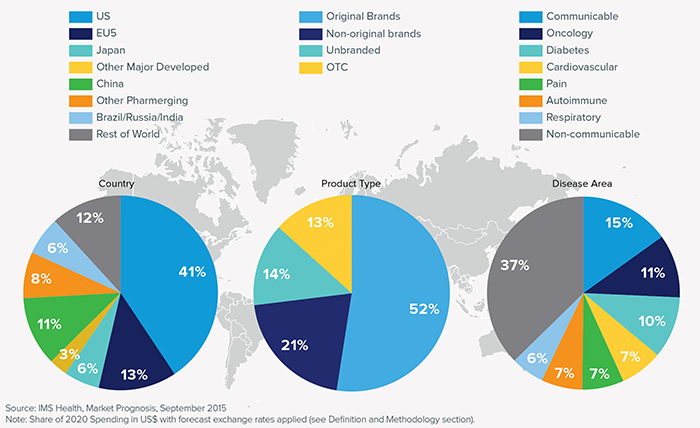


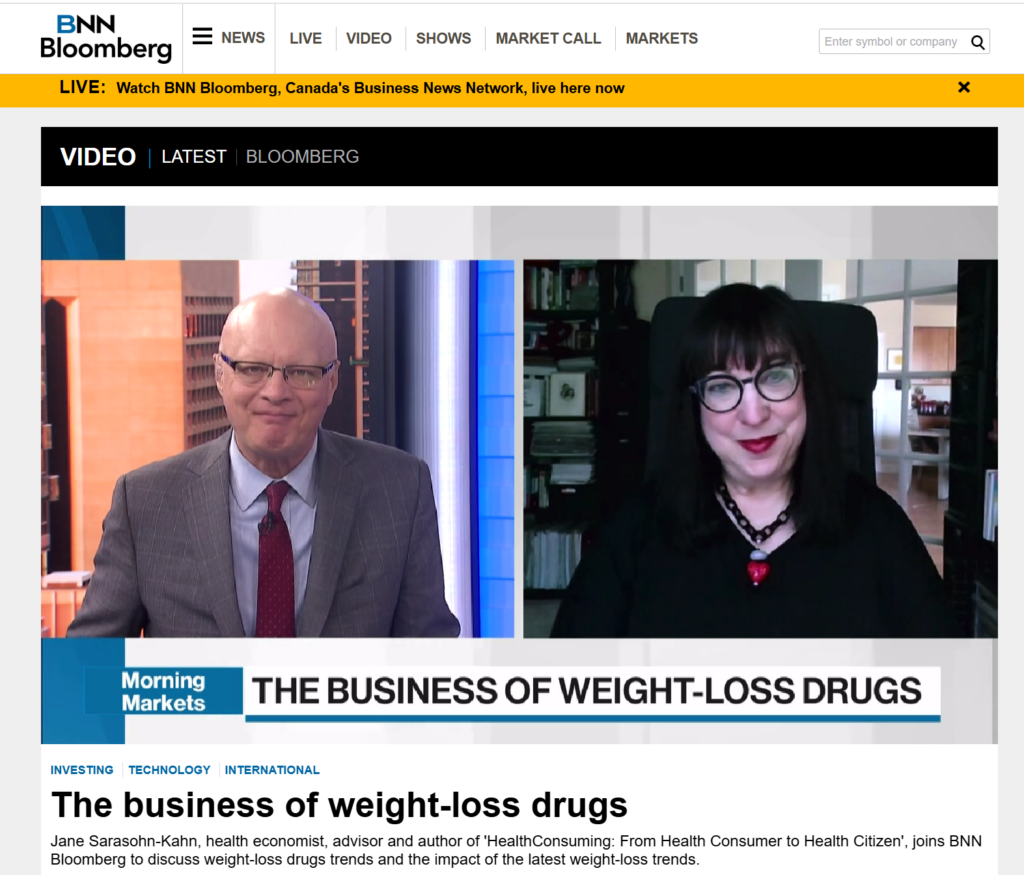 Interviewed live on BNN Bloomberg (Canada) on the market for GLP-1 drugs for weight loss and their impact on both the health care system and consumer goods and services -- notably, food, nutrition, retail health, gyms, and other sectors.
Interviewed live on BNN Bloomberg (Canada) on the market for GLP-1 drugs for weight loss and their impact on both the health care system and consumer goods and services -- notably, food, nutrition, retail health, gyms, and other sectors.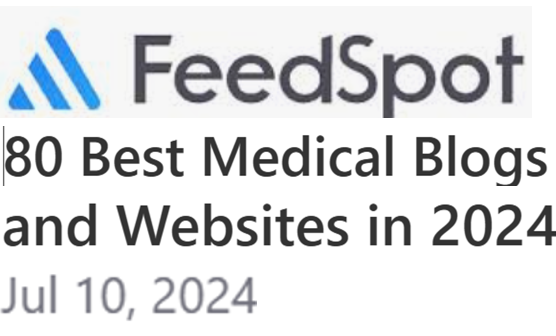 Thank you, Feedspot, for
Thank you, Feedspot, for  As you may know, I have been splitting work- and living-time between the U.S. and the E.U., most recently living in and working from Brussels. In the month of September 2024, I'll be splitting time between London and other parts of the U.K., and Italy where I'll be working with clients on consumer health, self-care and home care focused on food-as-medicine, digital health, business and scenario planning for the future...
As you may know, I have been splitting work- and living-time between the U.S. and the E.U., most recently living in and working from Brussels. In the month of September 2024, I'll be splitting time between London and other parts of the U.K., and Italy where I'll be working with clients on consumer health, self-care and home care focused on food-as-medicine, digital health, business and scenario planning for the future...